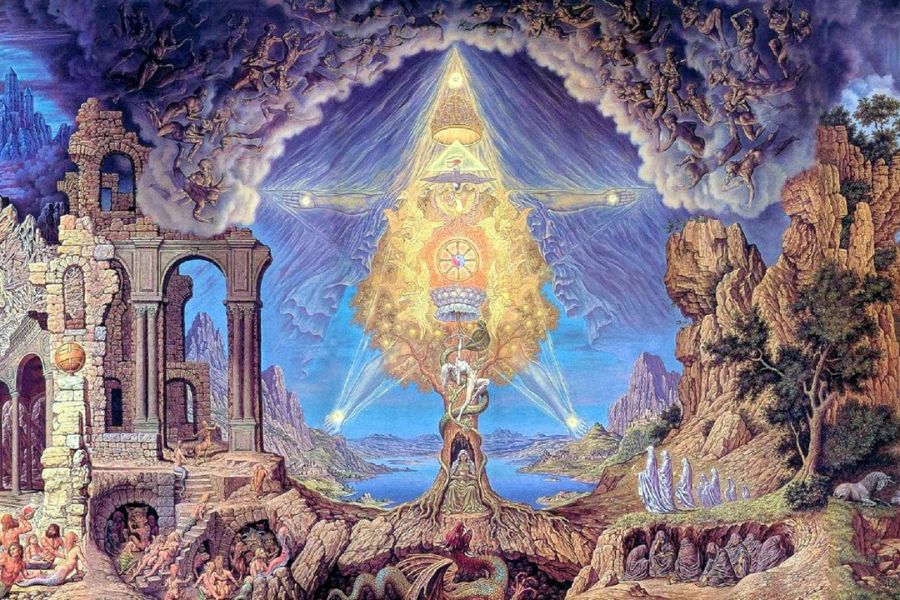Samael Aun Weor, one of the great esoteric masters of the 20th century, teaches that true mystical experience is not confined to conventional practices but must be cultivated through rigorous inner discipline, such as the "Yoga of Dreaming."
For those who sincerely wish to experience spiritual awakening and connect with the higher planes of existence, preparation must begin with understanding and mastering the dream state. According to the master, dreams are a doorway to the supersensible worlds, and through the right discipline, we can access these realms of divine wisdom.
For the Gnostic aspirant, it is essential to be demanding of oneself and create favorable conditions to remember and understand the mystical experiences that occur during sleep. The first step is to cultivate attention and self-awareness before lying down, ensuring that the soul is prepared for the transcendental experiences that may arise upon entering the dream world.
The master guides us to reflect on the emotional and mental state we find ourselves in before entering sleep. At the end of the day, after a long period of activity, it is important to create an internal and external environment conducive to deep rest and mystical perception. The practice of a brief walk outdoors, with brisk steps and the coolness of the night air, can help relax the body and mind, fostering physical and mental balance. However, Samael stresses that physical discipline should never be excessive; one must always seek harmony, not extremes. The environment should also be harmonious and serene, with light meals that do not disrupt sleep, avoiding excesses or stimulants that could hinder a full experience of the dream state.
To align with the practice of the Yoga of Dreaming, it is essential that the mind be calm, free from the worries of daily life. In Samael's teaching, he emphasizes that a mind in silence, without the noise of anxiety, becomes the most fertile ground for mystical experiences to arise. The ultimate goal is not to think but to silence the mind to allow the divine to manifest. To achieve this state, the Higher Emotional Center must be activated, which can be facilitated through contemplation and appreciation of transcendent music, such as the works of Beethoven, Mozart, and Chopin. Music, according to the master, is a powerful tool for awakening the Higher Emotional Center, allowing the soul to ascend and connect with higher realities.
Beethoven, in particular, is cited by Samael as an example of a being who, despite the hardships of life, knew how to open himself to mystical and transcendental experiences. His music, full of archetypal symbols and deep emotions, becomes a fertile field for the Gnostic to explore. Beethoven's work is not just a sequence of notes, but a direct expression of spiritual will and the process of self-transformation. Through it, the initiator can be led to understand the universal truths.
Additionally, Samael teaches that the relationship with the Divine Mother Kundalini, the creative and transformative force, is essential for spiritual progress. The Divine Mother represents the primordial feminine principle that guides the aspirant on their journey of self-discovery and illumination. She is described as the source of all creation, and as Beethoven did, we must venerate her, recognizing her importance in our spiritual evolution. Her presence is the key to inner progress, as she is the one who teaches us how to access the spiritual worlds, as well as the hidden mysteries of creation.
The preparation of the environment in which one sleeps for the practice of the Yoga of Dreaming is of utmost importance because the space must reflect harmony and balance. The room where one will rest should be pleasant, ordered, and, if possible, painted with the primary colors—blue, yellow, and red—that represent the creative forces of the universe. These colors, according to Samael, correspond to the fundamental energies of creation, and their presence in the environment can facilitate the alignment of the body and mind with cosmic energies. Moreover, the bed should be adjusted to the Earth's magnetic alignment, with the head of the bed facing North, so that the aspirant can benefit from the natural magnetic energies of the planet.
The choice of mattress is also significant; it should not be too hard or too soft but appropriate for the necessary comfort to ensure a restful sleep. The creaking of springs and unwanted movement of the mattress can interfere with the dream consciousness process, so the bed must be adequate and free from disturbances. Samael also recommends placing a notebook or pad under the pillow, with which the aspirant can record the details of their dream experiences right after awakening.
Once the aspirant lies down, they must adopt a specific posture that facilitates connection with Morpheus, the god of dreams. This position, lying on one's back, relaxed, with the hands resting on the solar plexus, must be maintained while the mind concentrates on the figure of Morpheus, asking for his instruction and awakening in the higher planes of existence. Morpheus, who has the power to shape dreams, is the key to the hidden knowledge revealed during sleep.
After waking, the Gnostic must perform the Retrospective Exercise, with the aim of recording and understanding the experiences lived in the dream. The master emphasizes the importance of recording every detail of the dreams, even if only fragments come to memory. The Retrospective exercise should begin immediately after waking, before the state of wakefulness completely takes over the consciousness. The more the practitioner dedicates themselves to memory and analysis of their dreams, the more they can access and integrate the spiritual experiences that occur at the deepest levels of being.
Ultimately, the Yoga of Dreaming, according to Samael Aun Weor, is a profound and demanding practice that requires discipline, patience, and constant self-observation. Only when the aspirant achieves perfect memory of their dreams and a genuine connection with the higher spiritual forces can they progress on their esoteric journey, unveiling the mysteries of creation and being, and achieving spiritual awakening. The practice of the Yoga of Dreaming is not just a technique but a path to self-knowledge and deep transformation, allowing the individual to connect with universal truths and transcend the limitations of the material world.




















